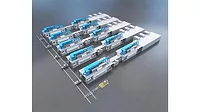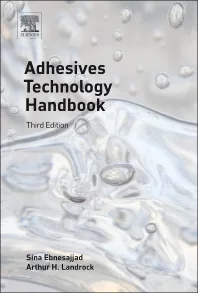ASC Installs New Spray Booth Technology

In its need to increase uptime, ASC Inc., a paint shop in Livonia, Mich., had switched to Omnichem's dispersion process several years ago, which has since allowed 24-hour operation for the facility.
In March 2004, faced with poor scrubber design, the constant threat of exhaust stack particulate emissions, and the need to improve overall spray booth system efficiency, ASC's Eric Boewe, plant manager, and Stephen Coleman, manufacturing engineering manager, weighed the risks of installing a new scrubber design - one that incorporated unproven technology. Because ASC had worked with Omnichem in the past, Boewe and Coleman trusted the company's recommendation of a new scrubber from TI Technologies, Detroit, Mich. The scrubber uses Ti Matrix technology, which is dependent on a very low speed labyrinth mechanism to capture virtually 100 percent of the paint overspray and relies on the booth water chemistry to constantly cleanse the same.
By the end of the first production shift with the new system in place, Boewe and Coleman committed to the installation of a second booth on the following weekend.

• 80 percent reduction in exhaust fan horsepower and electrical requirements,
• 100 percent uptime,
• Elimination of scheduled cleaning of the secondary mist eliminators,
• Zero grain stack discharge,
• Less noise - 60 dba vs. 85 dba,
• 75 percent reduction in evaporation rate and carryout,
• Improved booth balance and downdrafts of ±5 fpm at 3 ft above the grating anywhere in the booth, and
• Improved paint transfer efficiency via consistent downdraft throughout the booth.

"The TI Matrix has enabled me to paint at rates above the original designs and maintain the strictest EPA standards," Coleman says.
ASC's engineers have submitted budget requests for the installation of an 80 percent recirculation system at the Livonia facility, which will yield annual energy savings of $90,000. A scrubber installation order for ASC's Gibraltar facility is currently in the approval process and on schedule for future installation.
Craig Kelly, the inventor of the scrubber, has been involved with paint shop design and construction for decades and states that the scrubber can be retrofit into any existing booth design (wet or dry) and will typically provide an ROI within one to two years in water and energy savings alone.
For more information about the technology, call Kelly at 248-632-2900 or visit www.ti matrix.com.
Looking for a reprint of this article?
From high-res PDFs to custom plaques, order your copy today!






